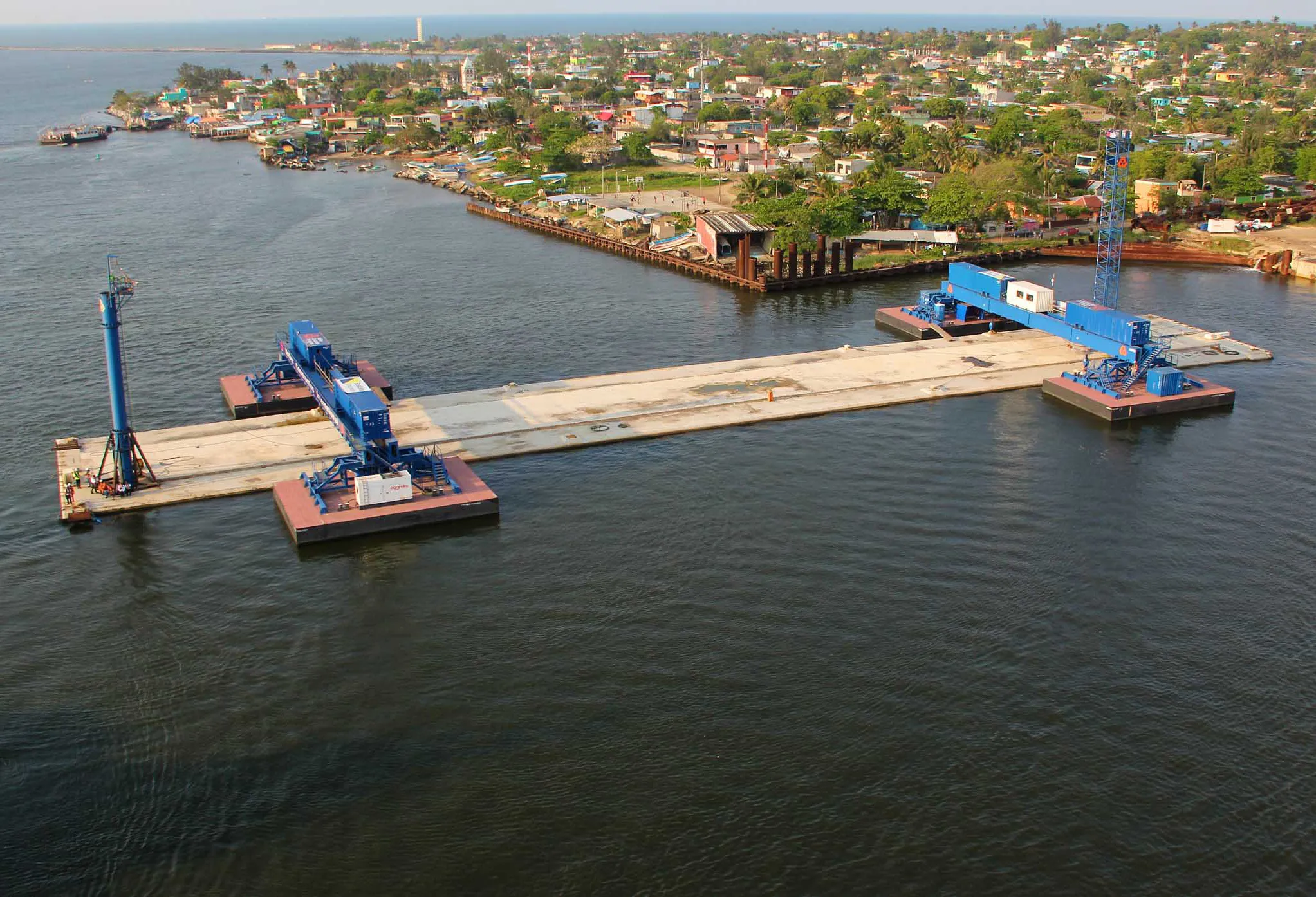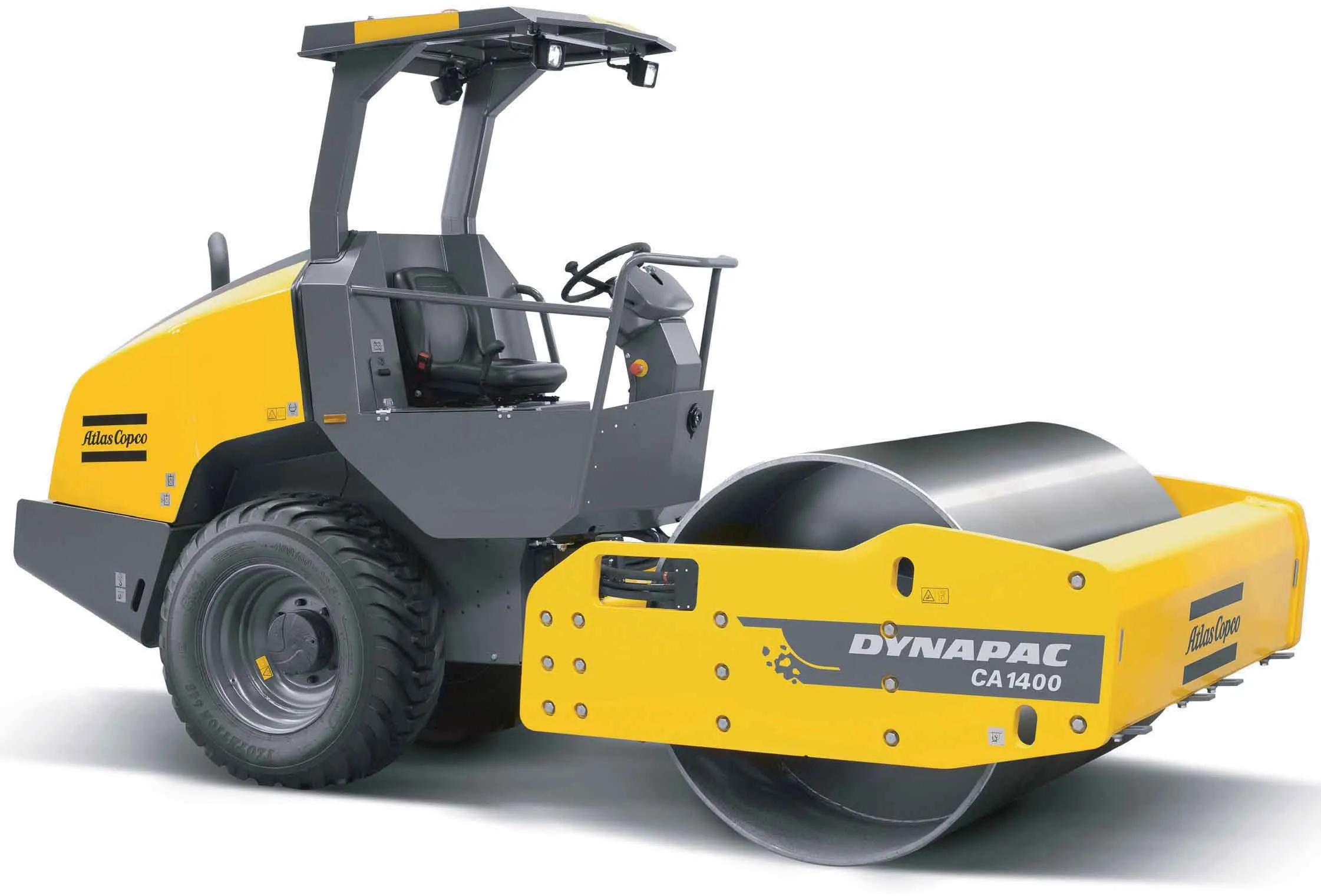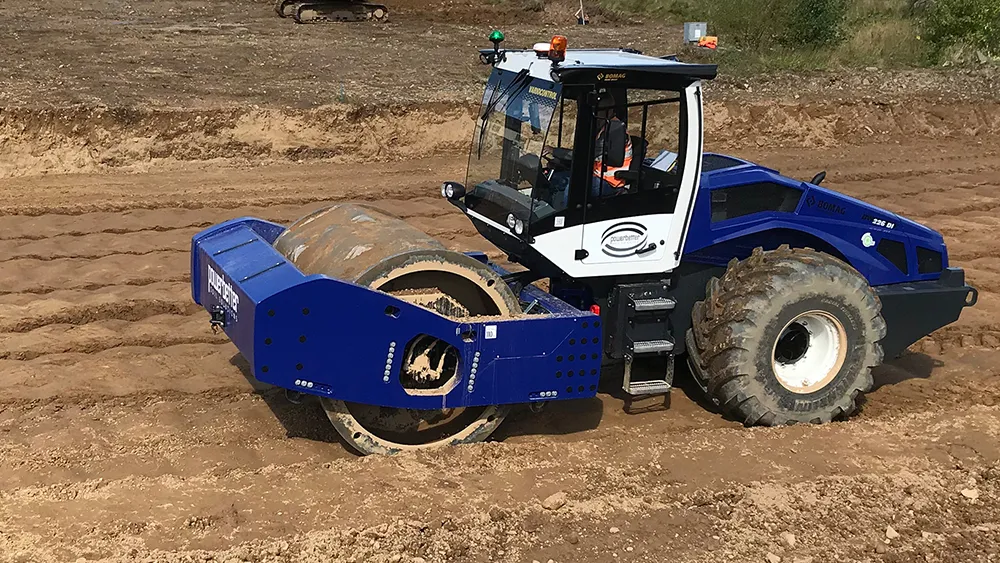
The challenge
Sites for new residential areas or industrial facilities are nowadays selected almost exclusively on the basis of overriding considerations, i.e. taking into account aspects of spatial planning and environmental protection, as well as social aspects. It is becoming increasingly common for areas or sites to be shortlisted with only limited load-bearing capacity. The poor subsoil often has limited or insufficient capacity to support the planned building loads. But that is no reason not to build on it. However, to avoid unpleasant surprises later, the subsoil should be assessed and compacted before construction begins. To minimise the risk of subsidence, this compaction sometimes has to penetrate deep into the soil. This requires an effective, reliable and, of course, economical method of improving the subsoil.
The project
Ten semi-detached houses are to be built in the Irish village of Baile Chaisleán an Róistigh (Castletownroche). The development site, extended by a second section, is located near Blackwater Castle and has an area of approx. 4,000 m2. The subgrade here - typical for this area in the southwest of Ireland - consists first of sandy silt, followed by loosely layered silty, gravelly sands. For the new two-storey houses, the developer of the project, PC Quality Homes Ltd, plans a shallow foundation. To do so, the structural loads will be transferred directly below the building into the subgrade.
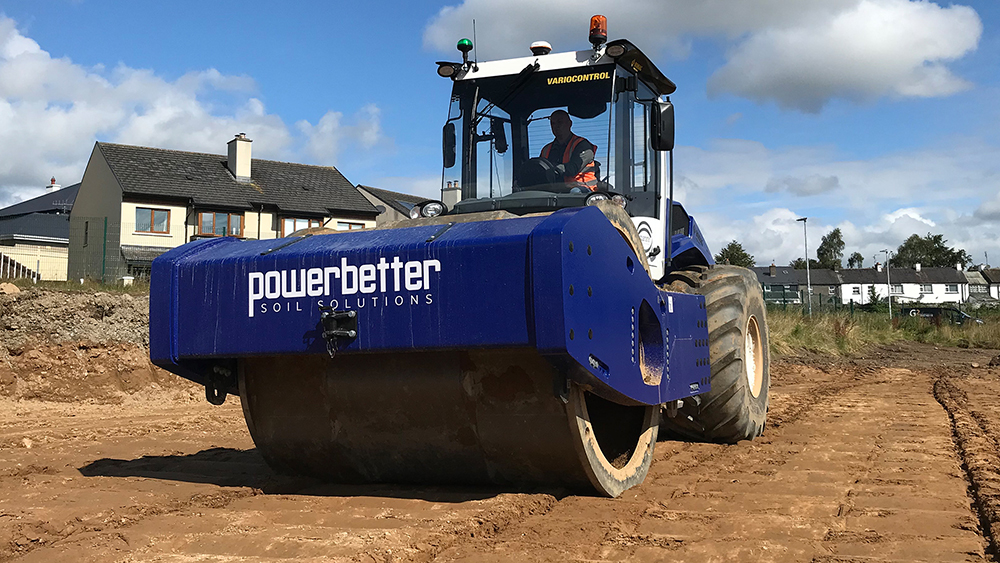 For economic reasons and as a matter of principle, the shallow foundation option is always preferred. However, care must be taken with non-load-bearing capacity soils because no one wants to experience the disaster of houses settling later. Preliminary measurements showed that the load-bearing capacity of the subsoil in the new building area on Mullavale was insufficient for a safe flat foundation for the houses and access roads. Therefore, the building ground had to be improved.
For economic reasons and as a matter of principle, the shallow foundation option is always preferred. However, care must be taken with non-load-bearing capacity soils because no one wants to experience the disaster of houses settling later. Preliminary measurements showed that the load-bearing capacity of the subsoil in the new building area on Mullavale was insufficient for a safe flat foundation for the houses and access roads. Therefore, the building ground had to be improved.
"Depending on the depth and thickness of the layers that are too sensitive to settlement for construction, various soil improvement methods can be used: soil replacement and deep compaction methods with heavy drop plates or polygonal rollers developed by BOMAG. These generate compaction penetration of up to 3 metres. The question of which technique to use ultimately depends on the local conditions and economic considerations. It is sometimes also possible to combine two different methods."
Hans-Josef Kloubert, Head of Application Technology BOMAG
Subsoil improvement method
In projects of this size, one method often used to improve the subsoil is to completely excavate and replace the cohesive layers susceptible to settlement. Backfilling with load-bearing capacity is then carried out by compaction in layers. Attention must be paid to proper compaction. In Castletownroche, however, this would have meant a material exchange with a total volume of almost 13,000 m3. Almost 2,500 removal and delivery trips by standard 3-axle tippers would have been required. The resulting emissions and burden on residents and the environment in the town of just under 500 inhabitants would have been out of all proportion. In addition, for every additional cubic metre of material removed, the costs for disposal also increase.
One alternative to such soil replacement is the principle of dynamic, intensive compaction with the help of a cable excavator and heavy drop masses. With this method, depth effects of between 5 and 15 m can be achieved. This creates impact funnels, which then also have to be filled with material and subsequently recompacted. However, this method is very time-consuming and costly. It also causes strong vibrations in the vicinity of the construction site. Therefore, in small Castletownroche, the dynamic, intensive compaction method was considered unfeasible and too expensive.
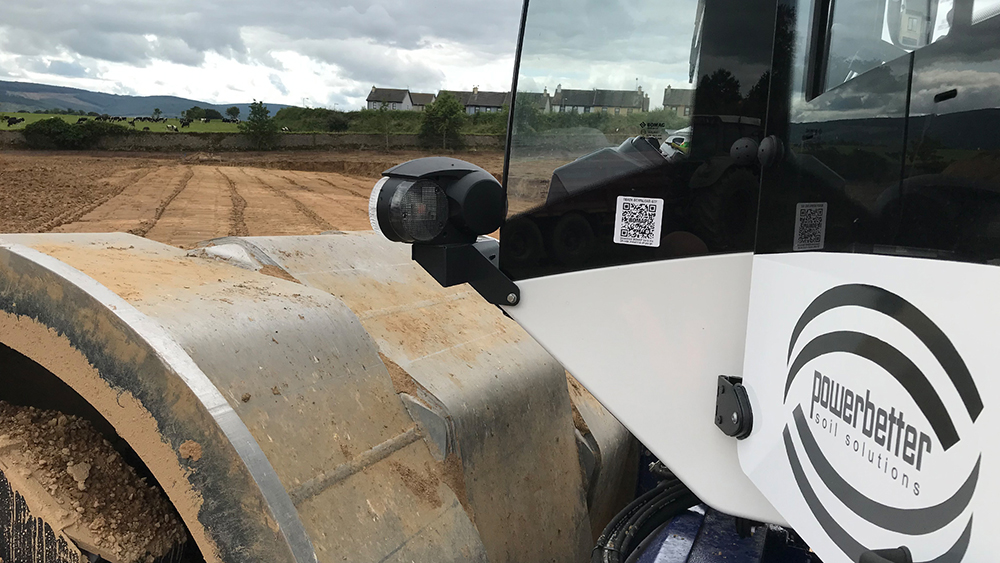 A job for Powerbetter
A job for Powerbetter
The British company Powerbetter Developments Ltd has been using different techniques for subsoil improvement on a project-specific basis since 1988. It has also been using BOMAG polygonal rollers for several years. The specialists from Leeds are regarded as pioneers in the industry and have acquired their unique know-how repeatedly and in a wide variety of projects in road construction, building residential complexes and leisure facilities or, on a larger scale, in airport expansion. Powerbetter continues to refine the methods and processes for efficient subsoil improvement, always working closely with local authorities. Powerbetter was also commissioned with the subsoil improvement measures in Castletownroche.
Cost-effective with the 26-tonne polygonal roller
Dynamic soil compaction using heavy single drum rollers (or heavy plates) has been common practice on earthworks sites for decades. However, depending on the soil type, it is only possible to achieve effective depths of up to 1 m.
With the polygonal roller, the penetration of a classic single drum roller can be significantly increased. Depending on the soil, BOMAG's BW 226 DI achieves a depth effect of 2 to 3 m.
"In Castletownroche, the top 1.20 m is removed, and the two-metre deep soil layers below, which are too loose, are then compacted with BOMAG's BW 226 DI."
Dermot Kelly, Technical Director Powerbetter
The single drum rollers with polygonal drums developed by BOMAG have gained an excellent reputation worldwide thanks to their outstanding depth effect. They are deployed worldwide for ground improvement and compaction of very thick fill layers - in backfill projects, large-scale embankments in road building, airport construction and dam engineering, port expansions and land reclamation projects. Their significantly higher performance is particularly evident on gravelly, sandy, silty soils and stony mixed substrates.
Three special features characterise BOMAG polygonal single drum rollers:
(a) the unusual-looking octagonal drum shape, which generates particularly efficient and deep compaction by constantly alternating between plate-like and wedge-shaped forces in the soil
(b) a unique and sophisticated drum exciter system that generates directional vibrations with very high amplitudes and can also be operated with an automatic amplitude control system (VARIOCONTROL)
(c) the integrated compaction measuring system TERRAMETER, which continuously determines the compaction gain and quality and displays it to the roller driver. An important optional extra to the measuring system is BOMAP, which ensures full documentation of the compaction quality and the passes.
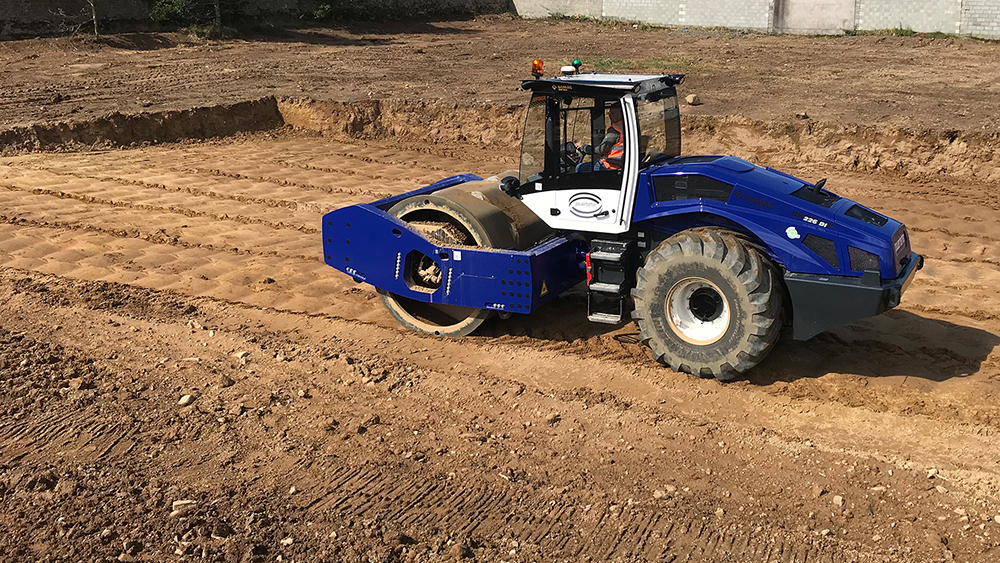 BOMAG single drum rollers with polygonal drums are powered by state-of-the-art engine technology. The intelligent ECOMODE speed control saves up to 30% fuel while at the same time ensuring significantly lower noise emissions. In addition, the optional ECOSTOP further reduces fuel consumption and wear.
BOMAG single drum rollers with polygonal drums are powered by state-of-the-art engine technology. The intelligent ECOMODE speed control saves up to 30% fuel while at the same time ensuring significantly lower noise emissions. In addition, the optional ECOSTOP further reduces fuel consumption and wear.
Powerbetter has been successfully using the BW 226 DI for several years in small and medium-sized development projects for subsoil improvement up to 3 m deep as well as for backfill with layer thicknesses of 1 to 2 m. In some projects, the performance of the polygonal roller is combined with other methods.
In the new Castletownroche construction area, only 1.2 m of soil had to be removed from the silty, weak non-load-bearing substrate. The BOMAG polygonal roller was then able to compact the level below. The specifications called for a compaction ratio of at least 95% modified Proctor density down to a depth of 2 m. After the last pass, the settlement had to be less than 5 mm.
More efficient compaction with BOMAP
To identify weak points during the compaction process while also minimising the number of unnecessary passes, the roller drivers at Castletownroche use the BOMAP assistance system and JOBLINK.
With BOMAP compaction progress can be easily monitored in real time. The assistance system uses the compaction parameters determined by the machine and displays them clearly on a colour map of the construction site. BOMAP shows where and how much compaction is still needed.
The app is simple to use on everyday smartphones and tablets for AndroidTM. Android is a trademark of Google LLC.
Thanks to BOMAP, the roller driver can see - just like on a navigation system - where the subgrade has already been optimally compacted or whether further passes are still required. The compaction quality maps generated here by BOMAP benefited not only the roller drivers but also the site management and quality control in the lab.
In most sections, the required compaction quality was already achieved after approximately 30 passes. After 5 days of work within 2 weeks, the BOMAG machine had completed the task of "deep compaction".
A more than satisfactory result
Achieving the required degree of compaction without any problems, enabling a cost-effective shallow foundation for the houses despite poor subsoil, protecting residents from too much construction site traffic, staying easily on schedule and within the budget - for the investor, the decision to contact a company equipped with a BOMAG single drum roller and polygonal drum in its construction machinery fleet was the right choice.
More information on BOMAP: Smart compaction control
More information on BOMAG Single Drum Rollers
Content produced in association with Bomag



